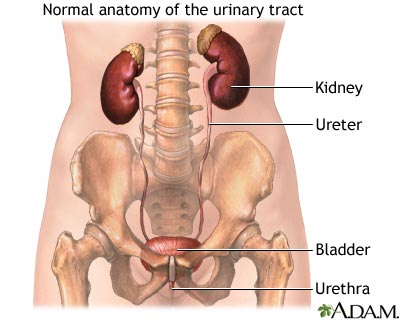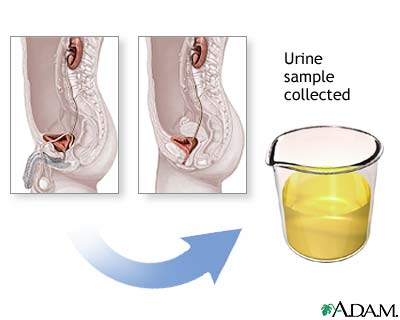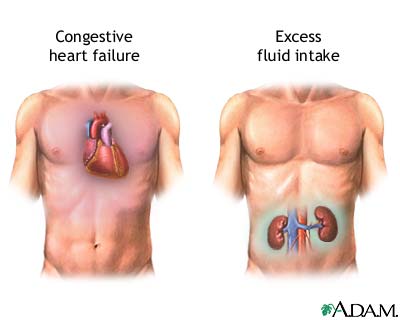Health Library
Osmolality urine - series

Indication
An osmolality test measures the concentration of particles in a solution. In this case, the solution is urine.

Procedure
How the test is performed: You are instructed to collect a "clean-catch" (midstream) urine sample. To obtain a clean-catch sample, men or boys should wipe clean the head of the penis. Women or girls need to wash the area between the lips of the vagina with soapy water and rinse well. As you start to urinate, allow a small amount of urine to fall into the toilet bowl (this clears the urethra of contaminants). Then, in a clean container, catch about 1 to 2 ounces of urine and remove the container from the urine stream. Give the container to the health-care provider or assistant.
To collect a urine sample from an infant: Thoroughly wash the area around the urethra. Open a urine-collection bag (a plastic bag with adhesive paper on one end), and place it on your infant. For males, the entire penis can be placed in the bag with the adhesive attached to the skin. For females, the bag is placed over the labia. Place a diaper over the infant (bag and all). Check your baby frequently and remove the bag after the infant has urinated into it. The urine is then drained into a container for transport back to the provider. No special preparation is necessary for this test.

Results
Greater-than-normal measurements may indicate:
- Addison's disease (rare)
- Congestive heart failure
- Shock
- Syndrome of inappropriate ADH secretion
Lower-than-normal measurements may indicate:
- Aldosteronism (very rare)
- Diabetes insipidus (rare)
- Excess fluid intake
- Renal tubular necrosis
- Severe pyelonephritis
BACK TO TOP
Review Date: 7/21/2021
Reviewed By: David C. Dugdale, III, MD, Professor of Medicine, Division of General Medicine, Department of Medicine, University of Washington School of Medicine. Also reviewed by David Zieve, MD, MHA, Medical Director, Brenda Conaway, Editorial Director, and the A.D.A.M. Editorial team.
 | A.D.A.M., Inc. is accredited by URAC, for Health Content Provider (www.urac.org). URAC's accreditation program is an independent audit to verify that A.D.A.M. follows rigorous standards of quality and accountability. A.D.A.M. is among the first to achieve this important distinction for online health information and services. Learn more about A.D.A.M.'s editorial policy, editorial process and privacy policy. A.D.A.M. is also a founding member of Hi-Ethics. This site complies with the HONcode standard for trustworthy health information: verify here. |
The information provided herein should not be used during any medical emergency or for the diagnosis or treatment of any medical condition. A licensed medical professional should be consulted for diagnosis and treatment of any and all medical conditions. Links to other sites are provided for information only -- they do not constitute endorsements of those other sites. © 1997- 2022 A.D.A.M., a business unit of Ebix, Inc. Any duplication or distribution of the information contained herein is strictly prohibited.
